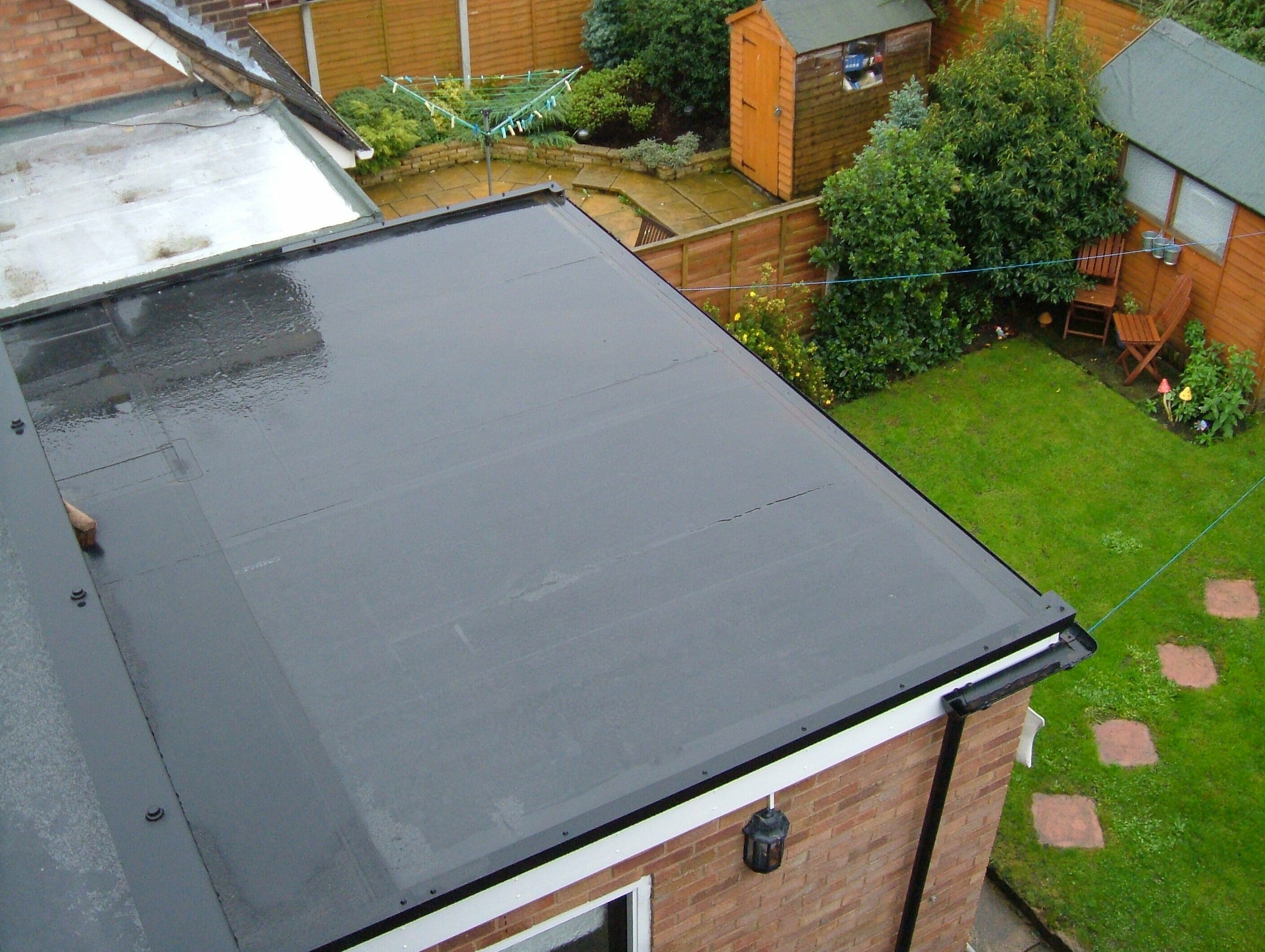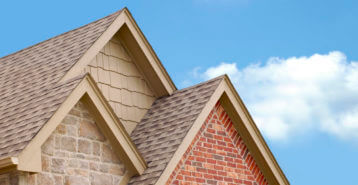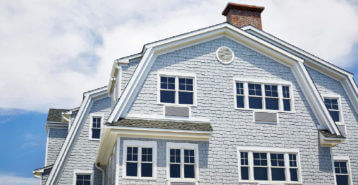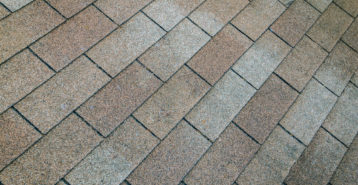What Is a Hip Roof?
A hip roof is a type of roof that slopes upward on all four sides and meets at a ridge at the top. Imagine a simple rectangular home — a hip roof rises evenly from all sides to form a peak. The ridge is the horizontal line at the highest point of the roof. The sloped sections of the roof are called hips, and they extend from the ridge down to the walls.
How a Hip Roof Is Built
When using rough-sawn timber for cut-roof construction (instead of trusses), builders cut the top of the rafters to fit against the ridge board every 24 inches. They also cut the bottom of each rafter to sit flat on the wall plates — this small triangular cut is called a birdsmouth.
Hip rafters run from each corner of the ridge board to the outside corners of the house. Jack rafters connect from the rafters down to the walls. Builders often add purlins — horizontal boards halfway down from the ridge — to help distribute the roof’s weight to the interior walls.
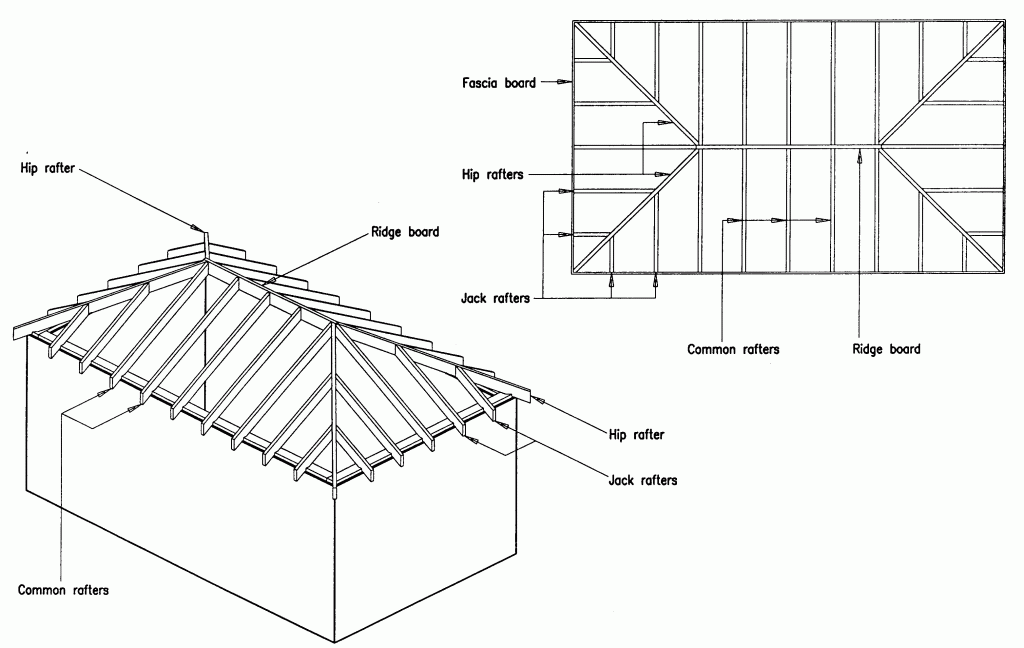
Different Hip Roof Designs
There are a few variations of hip roofs:
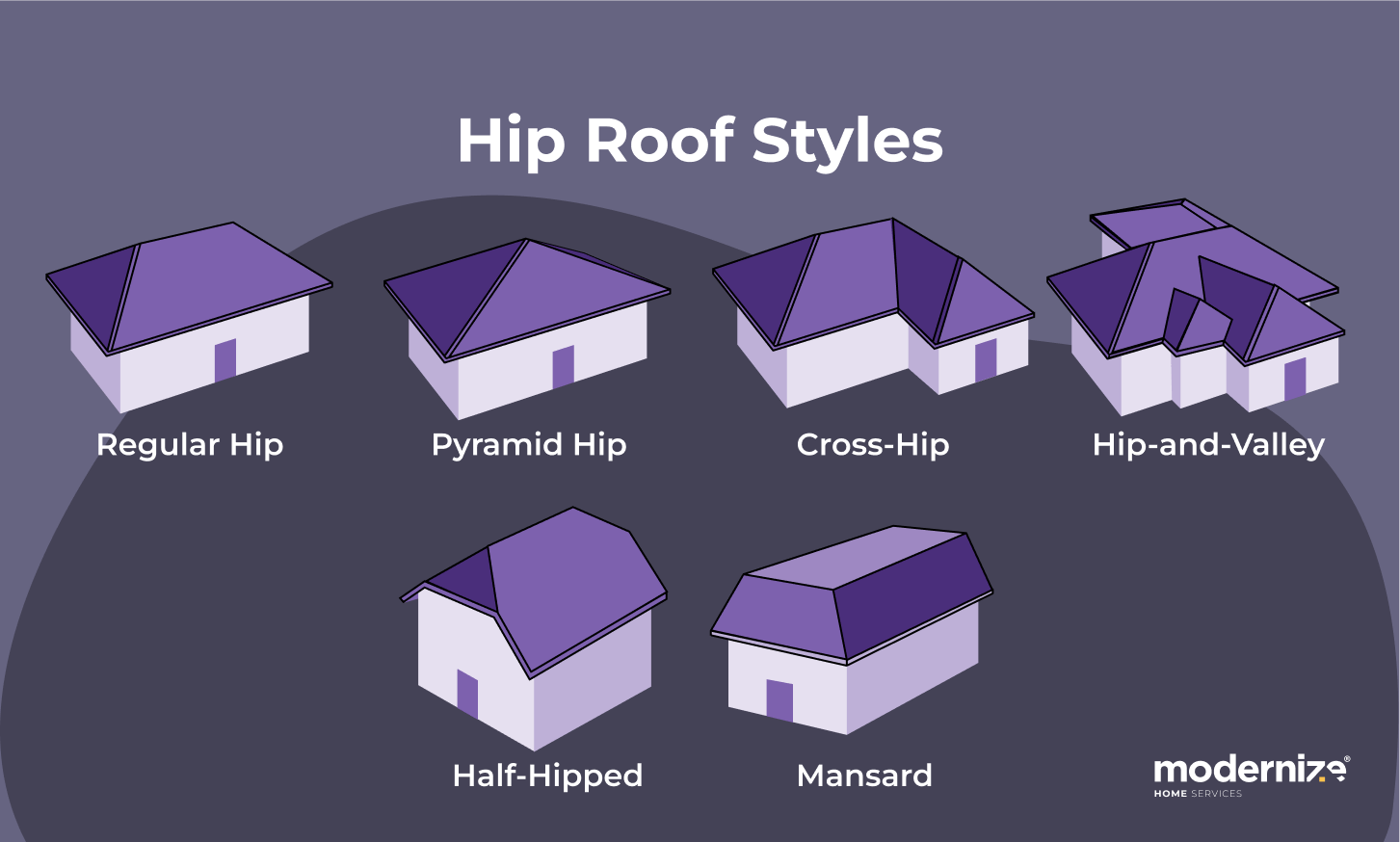
Standard
A standard, or regular, hip roof is the most common type. It has four sloped sides that meet at a ridge at the top, forming a simple, clean roofline. This design works well on square or rectangular homes and is known for its stability and classic look.
Pyramid
A pyramid hip roof looks exactly like its name — it forms a pyramid shape. All four sides slope inward and meet at a single point at the top, with no ridge. This style is common on smaller structures like gazebos, but it can also be used on square homes for a unique look.
Cross-Hip
A cross-hip roof is made by combining two hipped sections at a right angle. This creates an L or T-shaped layout, often used on larger homes with more complex floor plans. The roof sections join at a valley, which adds visual interest and allows for multiple rooflines.
Hip and Valley
A Hip and Valley roof (aka Dutch hip) design builds on the cross-hip style by adding extra ridges and valleys where roof sections meet. It’s often used on homes with complex shapes, adding architectural detail and multiple rooflines.
Half-Hipped
A half-hipped (aka jerkinhead or clipped gable) roof is a mix between a hip and gable roof. It has gable ends that slope slightly near the top, creating small hipped sections. This design softens the look of a gable roof and adds wind resistance.
Mansard
A mansard roof features a double slope on all four sides, with the lower section angled more steeply. This clever design maximizes upper-floor space and adds elegant, French-style character to the home.
Hip vs Gable Roof
Although gables are sometimes used on hipped or hip-and-valley roofs to create many different visual aesthetics, they are completely different styles of roof framing.
Gable roofs and hip roofs are very different. A gable roof has two sloped sides that meet at a peak, with triangular vertical walls (gables) at each end. In contrast, a hip roof has no vertical walls — all sides slope up to meet at a ridge.
One major difference is attic space. Gable roofs typically have steeper slopes, which creates more room for storage. Hip roofs usually have lower slopes, meaning less attic space.
How Much Does It Cost to Build a Hip Roof?
The average cost to build a standard 3,000-square-foot hip roof ranges from $24,000 to $36,000, or about $8 to $12 per square foot. Costs depend on:
- Size
- Slope
- Roofing materials used
- Overall complexity of the roof design
- Your general contractor’s pricing model
Hip roofs usually cost more than gable roofs because they require more materials, time, and skilled labor. On average, they cost about 40% more than other roof styles.
If you’re considering a hip roof, remember that roof costs also depend on the material you choose. You can use our free Roof Cost Calculator to compare pricing options.
Labor Costs
Labor costs to build a hip roof range from $40 to $80 per hour or $2 to $4 per square foot, depending on your contractor’s rates. If you’re replacing an old roof, you may also need to pay disposal fees, which range from $1 to $5 per square foot. Always ask your contractor for a detailed quote so you understand the full project cost.
Pros and Cons
Due to their design and shape, this style of roof provides huge benefits versus other common roofing structural styles.
Benefits
- Wind Resistance: The sloped sides make it better at handling strong winds compared to gable roofs. The sloped design reduces wind pressure and makes the roof more stable.
- Better Drainage: Hip roofs allow gutters to run along all sides of the house, helping rainwater drain efficiently. The slopes also direct water away from the roof and into the gutters.
- Sturdiness: Each roof side supports the others, making it strong and able to handle heavy snow and harsh weather.
- Aesthetic Appeal: Hip roofs create clean, balanced lines that look great with many home styles. They also make it easier to add vaulted ceilings inside the home.
Drawbacks
- Higher Cost: Hip roofs cost more to build than simpler roof styles because they require more materials and skilled labor.
- Potential for Leaks: Valleys and seams can be prone to leaks if not installed properly. However, a skilled roofer can reduce this risk with proper flashing and waterproofing.
- Less Attic Storage: Because of their lower slope, these roofs don’t offer as much attic space as gable roofs.
Is a Hip Roof Right For Your Home?
When it comes down to the bottom line, you will want to choose a roof style that best suits your home, climate, region, and, of course, your budget.
Due to their inherent strength and aerodynamic design, hip roofs are ideal for homes in regions with high winds or excessive snow. However, they also work well in areas with more temperate weather because the varying shapes and angles provide a dramatic flair to the roofline.
While hip roofs can be more expensive to build than other roofing designs, and they don’t offer as much attic storage, the many benefits of this roof design often outweigh any minor disadvantages.
To get started on your roofing project, click the button below. Modernize will connect you with up to four local contractors so you can compare quotes and services.
FAQ: Hip Roofs
Is a hip roof stronger than a gable roof?
Yes, hip roofs are generally stronger than gable roofs. Their inward-sloping design provides more structural stability and better resistance to wind and snow, making them ideal for areas prone to extreme weather.
Are hip roofs more expensive?
Yes, hip roofs typically cost about 40% more than gable roofs. They require more materials, more complex framing, and more labor to build due to their four-sided slope design and additional joints.
What is the difference between a hip roof and a partial hip roof?
A hip roof slopes on all four sides, meeting at a ridge or point. A partial hip roof, also called a half-hipped or jerkinhead roof, looks like a gable roof but has small sloping sections at the top of the gable ends, offering a blend of wind resistance and gable-style attic space.
What is the strongest shape for a roof?
In terms of overall durability and wind resistance, hip roofs are among the strongest roof shapes. Their aerodynamic, sloped design allows them to withstand high winds and heavy snow better than gable or flat roofs.


